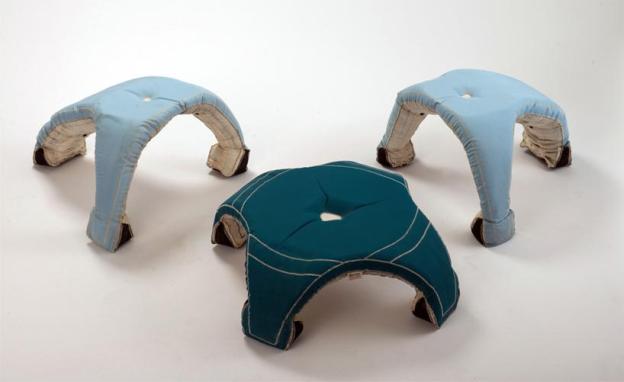
Urban farms are so 2012. So you grew some basil and tomatoes on your fire escape, big whoop. Did you grow yourselves a set of outdoor furniture? We didn’t think so.
A product by Israeli designer Itay Kirshenbaum, the “Betzavta” collection is a set of garden furniture that can transform into its 3D shape with just some sprinkle of water. The original form of the furniture is a canvas bag filled with concrete powder that solidifies with water. All the user has to do to make the pieces come to life is hose it down, pull on the wires that are pre-sewn to the bag, and mold the legs into the correct shape. After 24 hours of drying, the pieces will become hard enough to use as an outdoor table and chair. Although these items could be assembled as a solo project, Kirshenbaum says Betzavta is designed to promote community and collaboration, encouraging users of all ages to help each other build the garden stools and table.



